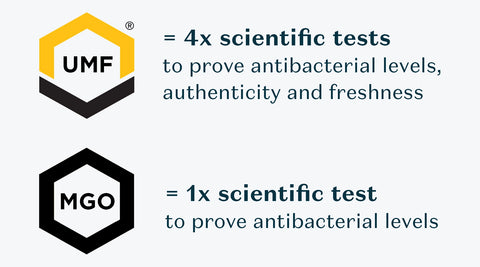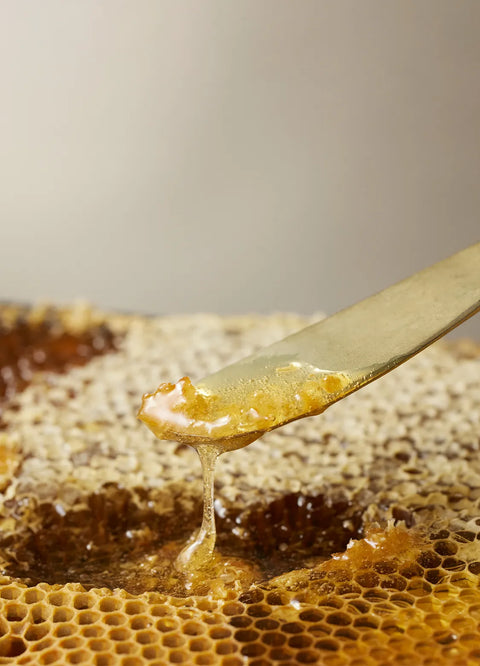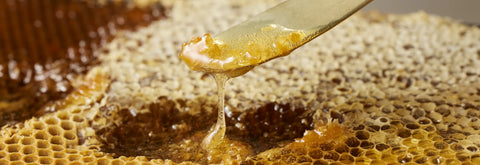FAQs
Mānuka honey is gathered from the flowers of the Mānuka Tree native from New Zealand (Mānuka is the indigenous Maori name for leptospermum scoparium).
Mānuka honey is considered a superfood and is revered for its unique qualities. The Mānuka Tree is an ancient healer and has been used in traditional Māori medicine for centuries.
The absolute minimum safeguard against fake Mānuka honey is to make sure that it was harvested, tested, certified, packed and labelled in New Zealand. Strict New Zealand regulations do not apply to Mānuka honey sold in bulk offshore that is not packaged in New Zealand!
TAHI is a licensed member of the UMF Honey Association (UMFHA). The UMFHA is an independent body established in New Zealand in 1998 to test, control and protect New Zealand’s Mānuka honey industry. It is the only grading system that measures all 4 chemical markers (identified by New Zealand’s Ministry of Primary Industries) present in Mānuka Honey and is considered the strictest and most important Mānuka honey measurement system.
A company producing and selling UMF™ Mānuka honey must be licensed by UMFHA to sell Mānuka honey that is UMF™ rated and it is also required to have the UMF™ logo AND grading number on a label. Searching for a company’s license number can be done via the UMFHA website: www.umf.org.nz.
Each batch of Tahi honey undergoes a series of tests in an independent scientific laboratory and gets a UMF™ rating ranging from 5+ to 25+, which indicates the honey’s pureness and authenticity. UMF™ is the best way to ensure the purity and quality of Mānuka Honey.
The UMFHA is 100% transparent about what it tests and measures and those measurements, done by an independent testing facility approved by the MPI (Ministry for Primary Industries) are available on the UMFHA website thanks to the batch number displayed on your jar of honey.
Tahi is a licensed member of the UMF™ Honey Association. UMF™ stands for “Unique Mānuka Factor”, it is a global standard that measures the purity and quality of monofloral Mānuka honey. Each batch of honey undergoes a series of tests in a government-approved independent testing facility and gets a UMF™ rating.
The UMF™ rating (the number on the jar) is the measure of the unique properties found in Mānuka honey. The bigger the number, the more potent the honey. The UMF™ scale starts at 5 and goes to 30, however 20 and above are very rare and hardly found.
Methylglyoxal (MGO) is the main organic compound found in Mānuka honey used to measure its antibacterial activity. There is a direct scientific correlation between the UMF™ and the MGO ratings:
UMF™ 5+ = MGO 83+
UMF™ 10+ = MGO 263+
UMF™ 15+ = MGO 514+
UMF™ 20+ = MGO 829+
UMF™ 23+ = MGO 1043+
UMF™ 25+ = MGO 1200+
However UMF™ means more than simply MGO. It also measures other key markers such as:
- Leptosperin, ensuring the authenticity of mānuka honey.
- Dihydroxyacetone (DHA), ensuring the shelf life of mānuka honey.
- Hydroxymethylfurfural (HMF), ensuring the freshness of mānuka honey.
By doing this group of tests it ensures that the MGO levels have not been artificially changed, or boosted by overheating, and the special activity of your mānuka honey will remain constant throughout its shelf life.
Everything is fully transparent. The batch number displayed on every jar of Tahi honey ensures its traceability and customers can retrieve the test reports from the www.umf.org.nz website by entering Tahi’s license number 2035 and the batch number displayed on your jar of honey. Tahi display both the UMF™ and the MGO gradings on their jars of monofloral mānuka honey.

Tahi Mānuka honey is harvested from some of New Zealand’s most remote and pristine locations. It is raw and natural, just as nature intended - No overheating, no pasteurizing and no artificial anything - It is free from GMOs and GE, with no added sugar, water or chemicals .
All Tahi honeys are independently tested and certified Glyphosate Free, Gluten Free and Non-GMO project certified.
Honey does not expire however it can change so it is important to store it properly and not expose it to too much heat.
Ideally it should be kept in a stable temperature area below 77 °F (25 °C), away from sunlight. Even better if you keep it in your fridge!
Mānuka honey contains high levels of Methylglyoxal (MGO), a molecule found in most honeys in small quantities (1 to 10 mg/kg) , but in Mānuka honey MGO can be over 100x higher. It is this molecule that gives the honey its antibacterial properties.
Mānuka honey is the one of the rarest commercially harvested honeys on the planet. Because of its unique properties and increased use in the medical, dermatological and skin care industries, the global demand for Mānuka honey exceeds the supply.
Mānuka honey is rare and precious, it is a very limited resource - Mānuka trees only grow in remote parts of New Zealand, it has a very limited harvest period and can only be collected at certain times of the year.
Tahi has built solid partnerships with landowners to make sure our hives are placed in the most optimal locations for good quality Mānuka Honey. We make sure landowners from the local communities get a fair deal for the honey produced on their land. It is also labor intensive to take good care of our bees – we have a high beekeeper to hive ratio.
It is rare to find honey with very high concentrations of MGO (Methylglyoxal), the molecule that gives the honey its antibacterial properties.
To make sure we sell genuine and active Mānuka honey, each batch is independently tested in scientific laboratories. The series of tests it undergoes to meet strict Government regulations and to get the UMF™ label are expensive but is the guarantee that consumers are getting genuine, authentic and pure Mānuka honey.
Yes, kids can eat Mānuka honey, but like any other honey infants under 12 months old should not eat it as their digestive system is not mature enough to handle honey.
Unlike refined, processed sugar and other sweet alternatives (ie stevia), Mānuka honey is far more than empty calories. It is a complex superfood that contains an abundance of well-being benefits.
Mānuka honey is a sweeter, more nutritional and slightly lower calorie alternative to sugar, with a more balanced energy release.
Mānuka Honey contains phenolic acids and flavonoids, which makes it a powerful source of natural antioxidants.
Minerals found in Mānuka honey: calcium, copper, iron, magnesium, manganese, phosphorous, potassium, sodium, zinc
Vitamins found in Mānuka honey: B6, thiamine, niacin, riboflavin, pantothenic acid, amino acids.
100% of profits from the sales of our honey and skincare products go back into restoring and regenerating our natural environment.
Tahi honey is eco-friendly, biodiversity positive and carbon negative. We follow a sustainable philosophy called the “4C’s”: Community, Culture, Conservation and Commerce. These guide us in our decision making: from conserving wildlife to using renewable energy; from preserving local culture to teaching future generations to take care of our planet, and our bees.
We use ethical beekeeping methods: we respect and care for our bees. This means we don’t feed them sugar water (as has been standard in the honey industry), corn syrup or antibiotics and we leave them with enough honey in their hive to keep them well fed over winter. We don’t use pollen traps because they can damage the bees’ delicate wings, nor do we collect bee venom as it can harm or even kill bees. Healthy bees = great honey.
We have won many awards for our environmental work and the quality of our honey.
We’ve consciously chosen 100% recyclable PET plastic jars for all of our honeys, rather than glass. Why? Glass jars aren’t made in New Zealand, so to import and export the jars would have a significant carbon footprint – the opposite of TAHI’s “reduce, reuse, recycle” philosophy. Glass jars are also significantly heavier so more energy is required to ship them around the world. Plastic also requires less protective packaging, again helping to reduce our footprint.
We offset the light carbon footprint that we do have through planting and wetland restoration. It’s our way of going one better for nature, in every way we can.
The difference between the pure Mānuka honeys is their activity level (defined by the UMF™ number) – the higher the number the more active the honey and the more intense the flavor.
In terms of taste, the non-UMF™ honeys are sweeter than the UMF™ honeys. More traditional. UMF™ honeys start to exhibit a depth of flavor. As you go up the scale it starts to exhibit a more intense, complex, tangy flavor profile.
In terms of which honey to choose, it depends what you want to use it for. Lower grades would be best for cooking or everyday wellbeing and the higher grades are more for specific / targeted use.

